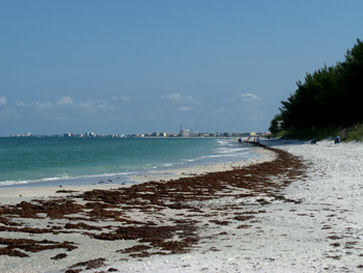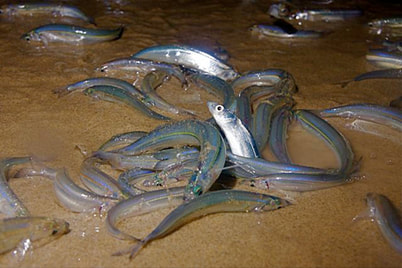|
How can beach cleaners be used to clean the beach without disrupting their natural ecosystems? Learn about a few common cleaning method adaptations here.
Maintaining beaches that are free of human debris often creates a challenge, because synthetic debris often mixes with natural organic deposits from the ocean, like seaweed. For many beach owners and locations, removing seaweed and other debris at the tide line using mechanical beach cleaners is no problem, and actually, preferred. This creates a pristine beach for visitors to enjoy.
In addition to the aesthetic benefits of removing wrack from the tide line, it also prevents re-contamination. Often E.Coli and other bacteria will be in the water from farm runoff and waste management overflow. The water contaminates the wrack, leaving bacteria-infected waste on the beach. Then, after the ocean clears of the bacteria, the wrack line can re-infect it—perpetuating a hazardous cycle. Removing the wrack with a beach cleaner prevents this from happening. Despite the visual and safety benefits of removing seaweed and other wrack from the tide line, certain beaches are mating grounds for certain rare or endangered sea creatures, which are negatively effected by beach cleaning. For example, Grunion fish in southern California lay their eggs and spawn on the beach surface from March thru June each year. During this time, all mechanical beach cleaners are prohibited from operating bellow the tide line. Similarly Piping Plovers nesting areas are completely off limits. However, other environmental issues allow for more flexible beach cleaning practices, and it is important that a beach cleaner machine is able to adapt to the associated regulations if it operates in such areas. For example, sea turtles in Florida lay their eggs in the sand. A deep-digging beach cleaner could remove or damage these eggs and quickly destroy the sea turtle population. Instead, beach cleaning is allowed with mechanical beach cleaners when they follow certain strict regulations. Specifically, Florida requires that the machine's footprint is 10 psi. Large floatation tires distribute the machines weight and allow for such even weight distribution, which keeps the weight of the machine from crushing the buried eggs. Similarly, machines are not allowed to clean more than two inches bellow the sand’s surface, as the eggs are typically buried about 10 inches deep. As discussed in a previous blog post, adjusting a beach cleaner’s mold board to a two inch cleaning depth ensures that the machine’s tines clean surface material without disturbing the eggs bellow. Sifting machines need to be careful not to dig their cutting edge too deep into the sand, which can be a tricky endeavor. In summary, it is important to balance health, aesthetic, and environmental concerns when cleaning beaches with mechanical beach cleaners. An adaptable beach cleaning machine can ensure this balance is met, providing the best results for both environmental safety and beach appearance.
6 Comments
3/19/2013 02:18:55 am
Reply
9/23/2013 12:16:29 am
Sometimes it is very hard to find good content on this topic. But your blog is my way to desired information, my problem is solved now
Reply
4/28/2013 03:46:25 pm
The topic you choose to share is really good because most of the time many eggs and small species affected but this kind of cleaning.
Reply
The beach is one of the favorite places which I prefer to visit when I am alone. It’s not only because I love the waves, it allows me to discover the natural ecosystems near it. I request the government to take necessary concern against it clean up through mechanical beach cleaners.
Reply
10/4/2013 03:11:44 pm
Then, after the ocean clears of the bacteria, the wrack line can re-infect it—perpetuating a hazardous cycle. Removing the wrack with a beach cleaner prevents this from happening.
Reply
10/10/2013 03:54:25 pm
Hi, Thanks for your great post, there are much nice information that I am sure a huge number of guys and gals don’t know.
Reply
Leave a Reply. |
This blog is managed by H. Barber & Sons. Founded in 1966, Barber is the world leader in beach cleaner production and authority on beach cleaning practices. This site and blog have been compiled to provide information about beach cleaners--their methods of cleaning, importance, and many applications.
Please direct any questions our way using the 'Contact Us' form. Thanks! Archives
June 2014
Categories
All
|


 RSS Feed
RSS Feed
